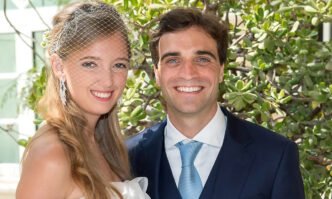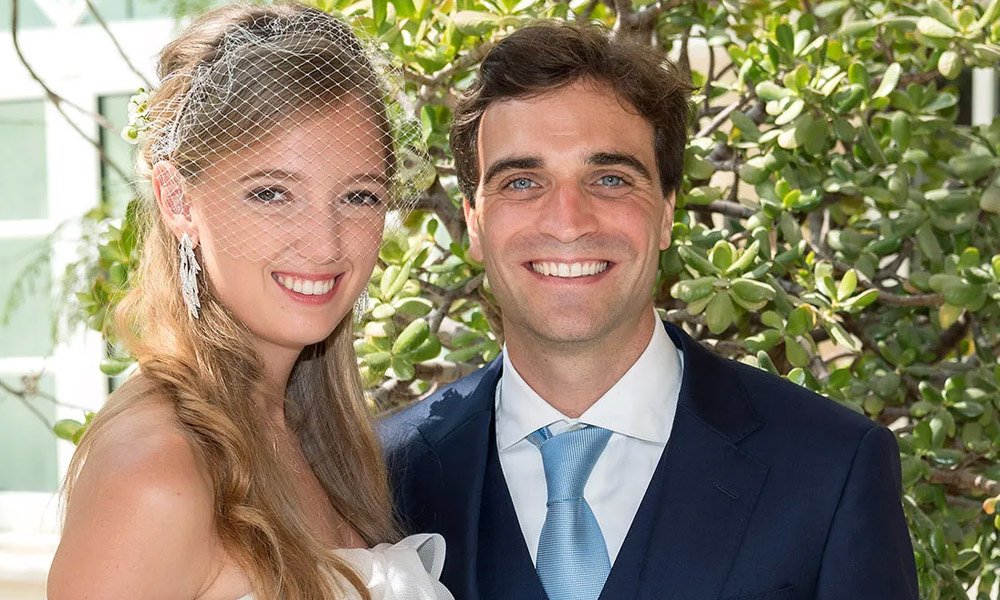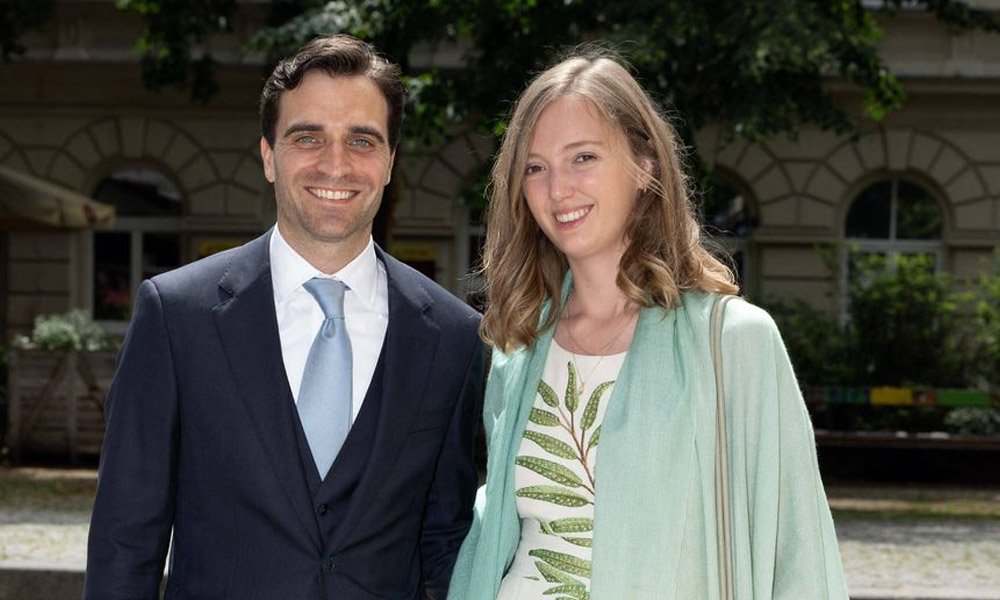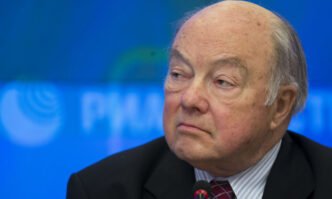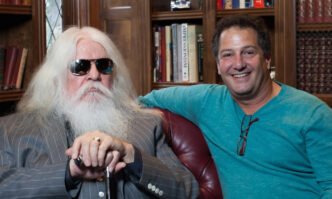Born on October 15, 1999, Archduchess Gloria of Austria is well-known member of Austrian Imperial Family. She is the daughter of affluent Thyssen family descendent Francesca Thyssen-Bornemisza and Karl von Habsburg, the present head of the House of Habsburg-Lorraine. Archduchess Gloria, one of the youngest members of the contemporary Habsburg line, is well-known for her great sense of style and public appearances; she represents the continuity of a legendary European royal dynasty even after the monarchy fell.
Early Life and Heritage
The Austro-Hungarian Empire, among Europe’s most powerful dynasties, is where Archduchess Gloria’s ancestry begins. Karl von Habsburg, her father, is the son of Otto von Habsburg, a well-known European statesman formerly heir to the Austro-Hungarian throne. Gloria links herself to several royal and noble lineages in Europe via her paternal grandmother, Archduchess Regina von Sachsen-Meiningen.
Born from affluent Spanish-born Baron Hans Heinrich Thyssen-Bornemisza, Gloria’s mother, Francesca Thyssen-Bornemisza, is Particularly in the art scene, the Thyssen family accumulated a sizable wealth from a well-known collection. Gloria is a fascinating person in royal and high society circles because of her mix of aristocratic Austrian and rich Spanish-Thyssen background.
Gloria grew raised in a modern environment and combined historic Habsburg traditions with the effects of current global society. Gloria was early exposed to the royal realm as well as the economic and cultural scene as her family regularly attended foreign events.
Archduchess Gloria of Austria’s Sibling: Ferdinand Habsburg
Born on June 21, 1997, Ferdinand Habsburg is an Austrian racing driver heir apparent to the House of Habsburg-Lorraine, an old European royal house. Participating in the FIA World Endurance Championship, he is a well-known person in racing having established himself with outstanding performance. Following his love of motorsports instead of a conventional royal route, Ferdinand has opted to pursue a career in racing despite his great background. Not just in racing circles but also as member of the esteemed Habsburg family, his commitment and ability on the track have attracted notice. Though ceremonial, Ferdinand’s position as heir to the Habsburg throne gives his public character an interesting dimension that balances royal legacy with a contemporary sporting career.
Like him, Archduchess Gloria of Austria’s elder sister Ferdinand Habsburg has the aristocratic title and hails from the esteemed Habsburg family. Together with their sister Archduchess Eleonore of Austria, they symbolize the current branch of the Habsburg dynasty, which nonetheless plays a symbolic function in European society even if they no longer possess governmental influence. Though without a kingdom, Ferdinand and Gloria, siblings, have a great bond to their family’s legacy and Ferdinand is actively engaged in royal family events. Along with Ferdinand, Archduchess Gloria is part of the continuing heritage of the Habsburgs by supporting philanthropic activities and preserving family cultural value. Although Ferdinand’s motorsports career distinguishes him from conventional royal responsibilities, both siblings show the changing function of modern European nobility.
The Habsburg Legacy
The Habsburg dynasty still represents Austria’s regal heritage even if the country is now a democratic republic. The dynasty lost political influence when the Austro-Hungarian Empire fell apart in 1918, but members such as Karl von Habsburg are an integral part of European cultural scene. Representing a continuance of this history, Archduchess Gloria of Austria attends many cultural and social gatherings honoring the Habsburg past.
Prominent political player in Europe, Otto von Habsburg argued for the European Union to incorporate Eastern and Central Europe. The political scene of modern Europe was much shaped by Otto’s activities. Karl von Habsburg is still carrying on his father’s legacy today in advocating the preservation of European cultural legacy; Archduchess Gloria periodically attends events with him.
Siblings and Family Dynamics
There are other children of Karl and Francesca besides Archduchess Gloria. Another important member of the Habsburg family is her brother Ferdinand Habsburg. Known for his career in motorsports, Ferdinand has competed in several well-publicized events. Another well-known person is Gloria’s older sister Archduchess Eleonore of Austria; but she keeps a lesser profile than her brother and herself.
Often seen together at family gatherings, the siblings display solidarity inside the family despite their different individual interests. Gloria’s public appearances have also been commended for their grace and elegance; the media regularly compares her with other European royals in terms of her wardrobe decisions and composed manner.
Public Image and Social Media Presence
Royalty like Archduchess Gloria of Austria have embraced social media as a means of public interaction in the digital age. Having an Instagram following of more than 6,000, Gloria posts snippets of her life, stressing both personal events and her royal duty involvement. She sometimes shares about her love of humanitarian causes and her opinions on social concerns, especially with an eye toward subjects like environmental sustainability and worldwide cultural preservation.
Her Instagram (@glohabsi) is a rare window into her personality that combines modernism with heritage. Her writings, which further fit the Habsburg family’s beliefs, frequently show a strong passion in art, culture, and social duty. Archduchess Gloria is a fascinating person in the realm of modern monarchy because of her mix of modern participation with nobility.
The Future of the Habsburg Family
Archduchess Gloria of Austria, a youthful member of the Habsburg dynasty, has the power to form the public image and influence direction of the family going forward. Although Austria no longer has a monarchy, Habsburg family members remain active in many political, artistic, and humanitarian activities. Gloria’s representation of the House of Habsburg-Lorraine places her in front of the public as a possible future family leader.
Though the current world is much different from the imperial courts of Austria-Hungary, the legacy of the Habsburgs is still very much a part of European history. With her distinctive origins and current appearance, Archduchess Gloria shows how old royal dynasties could adapt and flourish in the modern world while nevertheless respecting their legacy.
Conclusion
More than merely a youthful member of a royal dynasty, Archduchess Gloria of Austria symbolizes the continuity of an outstanding European history in a modern setting. Her mix of modern principles, great legacy, and social media participation draws attention to how royals are changing their position in modern life. Gloria, the daughter of Karl von Habsburg and Francesca Thyssen-Bornemisza, has the weight of a historic family name and her presence promises to be crucial for years to come in the Habsburg narrative.

